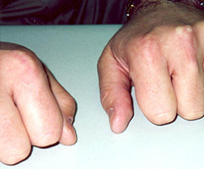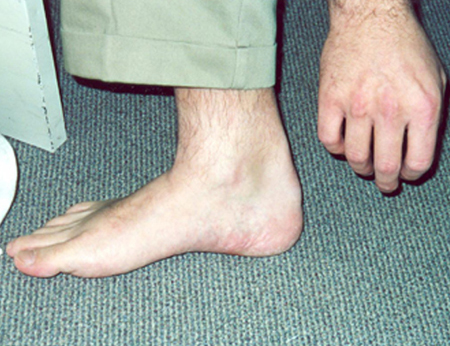Approach
Your Organizational Guidance
ebpracticenet urges you to prioritize the following organizational guidance:
Évaluation du risque cardiovasculaire en première lignePublished by: Domus MedicaLast published: 2010Cardiovasculaire risicobepaling in de eerste lijnPublished by: Domus MedicaLast published: 2020Patients with hypercholesterolemia may be incidentally diagnosed on routine blood testing and have no presenting clinical features.
History
In most cases the clinician is presented with the consequences of long-standing dyslipidemia. It is therefore wise to carry out a systematic review for vascular disease, focusing on symptoms of coronary artery disease, cerebrovascular disease, and peripheral arterial disease, such as chest pain, shortness of breath, weakness, dysphasia, or claudication. It is also helpful to take a detailed family history for early onset of coronary heart disease and dyslipidemia in first-degree relatives, and ask the patient about their level of exercise and diet at this stage.
Physical examination
The patient can be examined for direct signs of hypercholesterolemia, such as eyelid xanthelasmas, arcus cornealis (with onset before the age of 45 years), and xanthomata. Tendinous xanthomas at the Achilles, elbow and knee tendons, and over metacarpophalangeal joints are characteristics of heterozygous and homozygous forms of familial hypercholesterolemia.[Figure caption and citation for the preceding image starts]: Xanthomata over the metacarpophalangeal jointsCenter for Preventive Cardiology, University of Maryland Medical Center [Citation ends]. [Figure caption and citation for the preceding image starts]: Extravascular lipid deposits (xanthelasma) (arrows) in a patient treated with margarine enriched in plant sterolsVergès B, Athias A, Petit J-M, et al. Extravascular lipid deposit (xanthelasma) induced by a plant sterol-enriched margarine. BMJ Case Reports. 2009;2009:bcr10.2008.1108 [Citation ends].
[Figure caption and citation for the preceding image starts]: Extravascular lipid deposits (xanthelasma) (arrows) in a patient treated with margarine enriched in plant sterolsVergès B, Athias A, Petit J-M, et al. Extravascular lipid deposit (xanthelasma) induced by a plant sterol-enriched margarine. BMJ Case Reports. 2009;2009:bcr10.2008.1108 [Citation ends]. [Figure caption and citation for the preceding image starts]: Xanthomata of the Achilles tendonCenter for Preventive Cardiology, University of Maryland Medical Center [Citation ends].
[Figure caption and citation for the preceding image starts]: Xanthomata of the Achilles tendonCenter for Preventive Cardiology, University of Maryland Medical Center [Citation ends].
Palmar or cutaneous xanthomas may be present in the homozygous form of familial hypercholesterolemia.
Eruptive xanthomas over the trunk, back, elbows, buttocks, knees, hands, and feet may be present in severe elevations of triglycerides.
Palmar and tuberous xanthomas are seen in patients with dysbetalipoproteinemia
There may also be evidence of vascular disease, such as elevated neck veins or bibasal crepitations on lung auscultation (heart failure), hemiplegia (stroke), or diminished pulses (peripheral arterial disease).
Investigations
Usually lipids are measured in the fasting state. This includes total cholesterol (TC), triglycerides, high-density lipoprotein (HDL), and estimated low-density lipoprotein (LDL). Non-HDL-cholesterol (non-HDL-C), defined as the subtraction of HDL-C from TC, is a marker of cholesterol carried by pro-atherogenic lipoproteins: very low-density lipoprotein and remnants, intermediate-density lipoproteins, LDL, and lipoprotein(a).[34][35] Non-HDL-C, as well as TC, HDL-C, and apolipoproteins B and A-I, can be measured in nonfasting states. However, evidence showed that even LDL can be accurately estimated in nonfasting states if triglyceride levels are <400 mg/dL, especially if the outdated Friedewald estimation is updated to modern higher precision methods (Martin-Hopkins method).[36] Extremely high lipid levels may give a lactescent (milky) appearance to blood plasma.
Routine thyroid-stimulating hormone test is used to assess for hypothyroidism as an underlying cause of elevated lipid levels. Additional tests may be indicated by the history and exam findings to identify complications of hypercholesterolemia. These may include creatinine levels, fasting blood glucose and glycated hemoglobin, urinalysis, ECG, echocardiogram, cardiac stress testing, cardiac computed tomography to measure coronary calcium scores or luminal obstruction, cardiac catheterization, and vascular studies such as Doppler exam or ankle-brachial indices.
Diagnosis of familial hypercholesterolemia (FH)
Healthcare providers should have heightened awareness of patients with potential undiagnosed FH. Heterozygous FH is a common disorder, affecting approximately 1 in 250 individuals.[37] Patients with LDL-cholesterol (LDL-C) ≥190 mg/dL, physical findings of FH (tendinous xanthomata, arcus cornealis onset before the age of 45 years), or a personal or familial history of premature atherosclerotic cardiovascular disease with LDL-C ≥155 mg/dL should be considered for referral to a lipid clinic, formal evaluation for FH, and/or genetic testing. Importantly, for patients already on lipid-lowering therapy, pretreatment LDL-C levels should be accessed to evaluate for FH. If not available, providers should estimate pretreatment LDL-C levels based on the achieved levels and the potency of lipid-lowering therapy. For instance, an LDL-C of 120 mg/dL on a high-intensity statin may be the result of a 50% reduction from a baseline LDL-C of around 240 mg/dL. Homozygous FH is a rare but life-threatening disease, affecting 1 in 250,000-360,000 people.[38] Early identification and specialist referral are essential and European consensus recommends screening for homozygous FH whenever it is suspected clinically and/or with premature ASCVD.[38] Untreated LDL-C levels >400 mg/dL (>10 mmol/L) are suggestive of homozygous FH.[38]
Dutch Lipid Clinic Network criteria (DLCNC) may be used to evaluate for FH (see table).[39] Definite, probable, possible, and unlikely FH are diagnosed as with >8 points, 6-8 points, 3-5 points, and <3 points, respectively. The 2019 Canadian Cardiovascular Society Position Statement on FH highlights that there is no definitive gold standard for the diagnosis of FH. Current scoring systems, such as the DLCNC, rely on a scoring system to increase confidence in the diagnosis. The key message is that clinicians should consider the diagnosis when caring for individuals with very elevated levels of LDL-C and seek supportive findings. The Canadian Statement suggests the following screening criteria: LDL-C ≥193 mg/dL in those ≥40 years old; ≥174 mg/dL in those ages 18-39 years old; and ≥154 mg/dL in individuals <18 years old.[40] The 2019 European Society of Cardiology/European Atherosclerosis Society guidelines recommend considering FH in patients with coronary heart disease under the age of 55 in men or 60 years in women, in those with family members with premature cardiovascular disease, in patients with relatives who have xanthomas, in adults with LDL >190 mg/dL or children with LDL >154 mg/dL, and those with a first-degree relative with FH.[41]
Genetic testing has an important role in the management of patients with potential FH. First, it can help to confirm a diagnosis, though a pathogenic variant in the most common genes is only identified in 30% to 80% of individuals with clinical FH.[40] More importantly, when these genes are identified, it facilitates cascade screening of family members, which is critical. Even when a gene is not identified, screening of first-degree relatives with lipid testing should be performed.[40][42] Another important reason to perform genetic testing is for prognostication. Individuals with severe hypercholesterolemia and an FH mutation have an odds ratio for coronary artery disease that is 22-fold higher than those with LDL-C <130 mg/dL, as compared with an odds ratio that is 6-fold higher in those with severe hypercholesterolemia and similar LDL-C levels but no FH mutation.[43]
[Figure caption and citation for the preceding image starts]: Dutch Lipid Clinic Network criteria for familial hypercholesterolemiaAdapted from the World Health Organization. Familial hypercholesterolemia - report of a second WHO Consultation. Geneva, Switzerland: World Health Organization, 1999 [Citation ends].
Use of this content is subject to our disclaimer